Four-cylinder engines
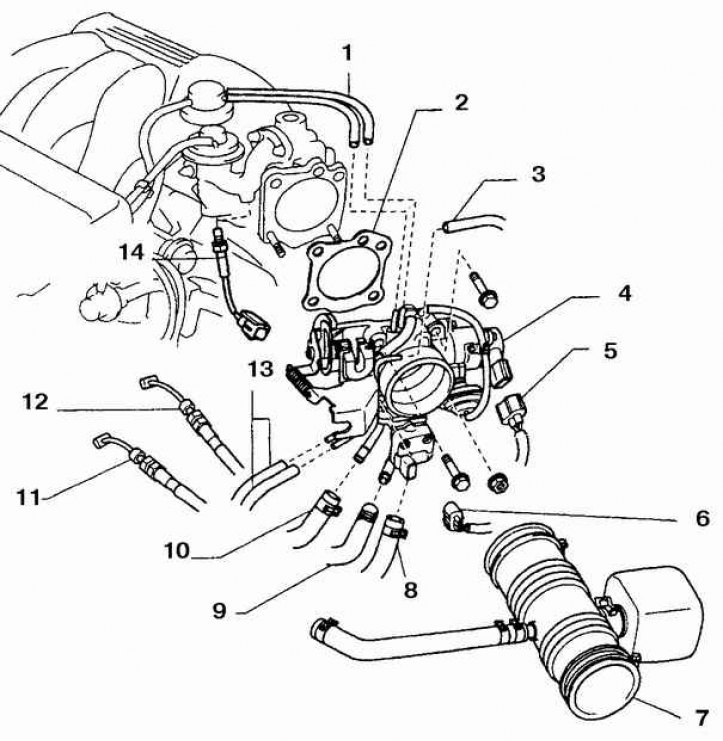
1. Vacuum hoses; 2. Gasket; 3. Hose of the system trapping fuel vapors; 4. Throttle cover; 5. Throttle position sensor wire; 6. Wire; 7. Pipe connecting the throttle to the air filter; 8. Coolant bypass hose; 9. Air hose; 10. Coolant bypass hose; 11. Throttle cable; 12. Accelerator cable; 13. Hose of the system trapping fuel vapors; 14. Exhaust gas recirculation temperature sensor
Throttle Vacuum Port Functioning - 4-Cylinder Models
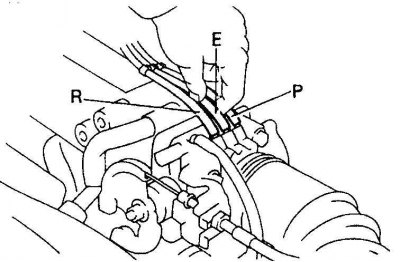
| Port name | At idle | Other modes |
| R | no vacuum | vacuum |
| E | no vacuum | vacuum |
| R | no vacuum | no vacuum |
Examination
1. Inspect the linkage, it should function smoothly and not jam.
2. Start the engine, disconnect the vacuum hoses from the throttle one by one. Check for vacuum at idle and at higher RPMs. Compare test results with data in table Throttle Vacuum Port Performance - 4-Cylinder Models.
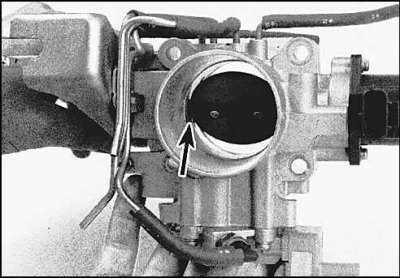 | 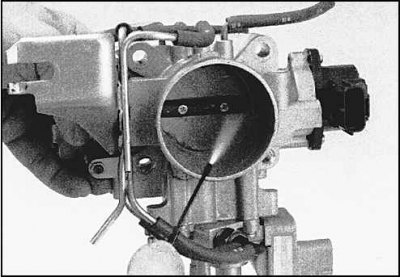 |
3. Remove the air intake pipe and check the throttle for carbon deposits and dirt. If necessary, clean the throttle with a special carburetor cleaning solution.
Replacement
1. Disconnect the negative battery cable.
2. Remove the air intake pipe connecting the throttle body to the air filter.
3. Disconnect the accelerator cable from the throttle lever.
4. Disconnect hoses and wires from throttle body.
5. Disconnect the wire from the throttle position sensor.
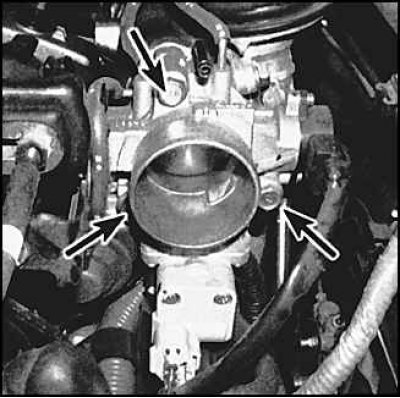
6. Remove the throttle mounting bolts.
7. Disconnect the throttle from the intake manifold.
8. Installation is carried out in the reverse order of removal.
